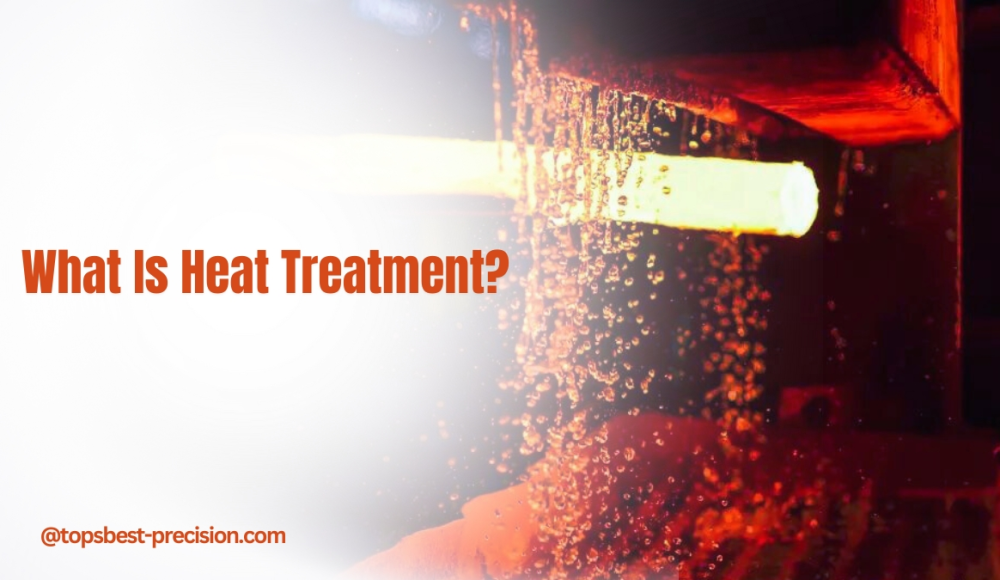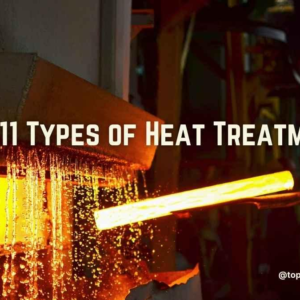O que é tratamento térmico?
Os tratamentos térmicos são utilizados de forma ideal nas linhas de produção, como forma de melhorar metais ou liga propriedades. There are several ways of altering the characteristics of the material through controlled heating and cooling: they can be made harder, mais forte, mais dúctil, e resistente ao desgaste, e rasgar, according to a particular job. Sometimes in the fabrication shops, the term ‘heat treatment’ broadly refers to stress relieving process of welds, flexão, or forming. Stress relieving helps to eliminate the internal stresses, produced during the fabrication. Então, this makes the material strong and stable under stress.
Tratamento térmico: Why is it Important?
Heat treatment improves the strength, hardness as well as overall strength of the metal, especialmente aço. Sem isso, the metal part used in automobiles, aviões, and mechanical tools would not be as strong or as enduring. Geralmente, Metals that are heat treated are found more resistant to wear and corrosion than the ones that are not heat treated.
Heat treatment is preferred because it improves the strength and the resistance of the metals and as a result, the frequencies of replacement and maintenance are minimized. This makes the machines run efficiently and lowers the cost and this is very crucial in areas like aerospace and automobile industry where safety is a major factor.
Common Types of Heat Treatment
The most commonly employed heat treatments include:
- Carburismo
- Nitretagem
- Hardening & Temperamento
- anelamento
- Cryogenics
- Normalização
Key Steps in the Heat Treatment Process
There are generally three steps involved in heat treatment:
- Heating: Metals are reheated to a certain temperature depending on what is wanted to be achieved. This temperature may differ depending on the metal used as well as the process involved and can go up to 2400°F (1300°C) em alguns casos.
- Soak Time: The metal is kept at the target temperature for a given time to change its internal structure. Loosening the control of soak time results in changes in the microstructure of the metal.
- Resfriamento: Cooling can either be fast (têmpera) or slow depending on the characteristics that the material being cooled needs to possess. Quenching can transform the metal to its hardened state whereas slow cooling may increase toughness or diminish the measure of brittleness.
Which Metals Can Be Heat Treated?
Heat treatment is commonly used to improve the surface properties of various metals, como força, dureza, e resistência à corrosão. Below is a list of metals frequently subjected to heat treatment processes:
Considerations for Heat Treatment
Let’s highlight the factors that ensure successful heat treatment and the desired material properties.
- Surface Roughness: Some heat treatment operations such as hardening and tempering may raise the surface roughness, and therefore the parts may need to be polished to the required standard (por exemplo., moagem).
- Costs: The cost of heat treatment is influenced by the process adopted, the material to be treated, and the production volume. Por exemplo, annealing is cheaper than hardening since the cooling process is slower and the equipment required is not as much.
- Material-Specific Temperatures: Every material has the right temperature for heating and cooling. Heating and cooling curves of metals are given by metallurgists which gives the exact requirements to temper the metals. Nesse caso, manufacturers depend on accurate heat treatment processes to enable them to deliver products that work as expected in different environments. One treatment type is used to increase the hardness of the metal or alloy to meet certain operational requirements while another is used to refine the flexibility of the metal or liga.
FAQs – Heat Treatment
1º trimestre. Heat treatment of metals – can all metals be heat treated?
Não, metals have different reactions depending on their chemical structure and grain structure. Ferrous metals such as steel are generally expected to exhibit good behavior, whereas some non-ferrous metals may need surface treatments.
2º trimestre. Is heat treatment costly?
The cost varies with the method, the type of furnace to be used, and the material to be coated. Although such processes as vacuum or induction hardening could be rather costly, the improvement of the mechanical properties leads to effective cost-effectiveness in the long run.
3º trimestre. Is it possible to do heat treatment from home?
Industrial heat treatments involve accurate control of temperature which may range above 1000°F and require a specific atmosphere to prevent oxidation. Some of these could be undertaken without the necessary gear leading to a destruction of property or pose serious risks.
4º trimestre. What should be taken into consideration when selecting the proper heat treatment?
No entanto, it is dependent on the mechanical properties. These include hard, dúctil, or tensile strength as well as the type of alloy under treatment. Referring to material standards or carrying out phase diagram analysis enables one to make a decision.
Q5. Is heat treatment reversible?
Não, heat treatment is not reversible. Once a material undergoes heat treatment, its internal structure and properties are permanently altered.
Notas finais
While some heat treatments such as annealing or tempering may reverse the previous hardening process by changing the grain structure, some other heat treatments may permanently alter the properties of the metal, and therefore selection must be done carefully.
Heat treatments are widely used in different branches of industry, as they play an important role in the characteristics of metal products. From the cars we drive to the buildings we depend on, heat treatment improves the characteristics of the materials, tornando -os mais fortes, more resistant, and more durable. Portanto, it’s important to understand the specific parameters necessary to accomplish goals related to processes such as annealing, hardening, and tempering among others.
We hope this discussion provided useful information on the role of heat treatment in today’s manufacturing. If you have any questions or if you need professional advice, you can ask us at www.topsbest-precision.com.




3 pensamentos "O que é tratamento térmico?”